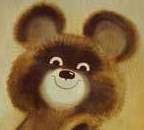Hidden narrator is one thing, but the problems begin, when the DM and the would be author in their ignorance take this advice literally, and fail accordingly. Dungeon adventure turns into a boring dungeon crawl driven by random event generation tables. Would be authors fail miserably, writing paper and pencil movies to imutate their diet of tv and popular fiction. The first one to set everything straight was Umberto Eco, a brilliant scholar from Italy. In his small book, Six Walks in the Fictional Forest, he tells us that the most realistic storytelling exists in pornography - those long shots between the sex scenes, where the characters arrive in a car, get out, and walk to the motel room. Those are continuous and unedited single pamn shots, that omit and edit nothing, but do you want to write a story like that - without a narrator? A totally randomly generated dungeon using Gygax original tables and any of the room stocking and random encounter tables out of the D&D books will be the equivalent. Here is the thing - the minute you select special monsters and events into your encounter table, you have started to edit and to tell the story of your world.
Stories can be written about different things. There is an event driven story, about the plot and actions of its protagonists, there are stories about people, which end, when the characters move on. There are stories about places, which end when the favorite hangout closes. Any Sandbox is a story of a place and the DM can assign where the story begins and when the story ends. Videogames start at the beginning and end whe the biggest boss monster is defeated. A sandbox can start when a continent is discovered and the first settlers set foot on the continent, and end when the continent is settled, or they can start with the beginning of a war and end when the war ends.
Just as graphic artists work with different types of media, pastels, oils, watercolors, ets, story-tellers too, have a variety of different media with which to tell their story. Various forms of writing, poetry, short story, and the novel, are some of the obvious ones. Choose your own adventure books, CRPG's, PC Adventure Games, D&D, and other role playing games are alternative forms of story-telling. The bottom line is that you can tell your story through your sandbox.
This doesn't mean that you have to write volumes of the setting description, before yiu start gaming. You fill out the details as you go along, but you choose carefully what goes into your room keys, on your maps and on your encounter tables. You decice on what story takes place in your campaign, the major events in your campaign and adventure hooks of how your players will have a chance to interact with these hooks - The simplest examples - Country is being invaded by a nomadic horde, and the players are in the path of that invasion. Will they run for their lives? Will they stand and fight? What will they do the next day?
You will have to flesh out some fundamental and important details. Let's say you have a Grinning Orc Forest? How does that forest differ from every other forest in the real world and in fantasy? What makes that forest unique in YOUR world? Jot down those details and put them into potential encounter tables and places to explore in that forest. What about the weather? And the Orcs of the Grinning tribe? How do they fit in your world? Figure out loot items of varying degrees of magical and intelligence value to player. Through largely worthless loot, that players can discover (if they loot them) the story of this tribe? If these orcs farm, there will be dirt under their fingernails. They live near a lake - they will have fishing line and hooks. They live in a cave? how about tallow candles? What else? Torches and spelunking rope? Meals of pieces of giant mushrooms and cave crickets? Don't tell the players its a spelunking rope! Describe the knotted rope for climbing and various anchor hooks. This is how you tell a story through your sandbox.

Wow, you are productive today!
ReplyDeleteI find this article to be extremely helpful, Brooser. This is Internet Gold! There is a balance between Sandbox style play, and meta plot story lines; both, I believe, are disastrous to the table if gone to the extreme, and I HAVE done both.
Beautiful work Brooser!
Thank you, Ripper! It was my Friday, and my Little Two-Scoop was in the shop, and it was gonna be steaks and vodka and premiere of Z-Nation Season 2 on Netflix, but first, the g/f had to do dishes before I start cooking... so, I had a bit of time...
ReplyDeleteIf this was internet gold, than for me to outlined wilderness adventure design the way Moldway outlined dungeon adventure design would be the internet philosopher's stone! You see, I firmly believe, that the reason dungeon adventure became iconic D&D is because of Dungeon as Adventure Flowchart, and I need to hit on Wilderness as ...
That too much of anything is a disaster is a truism, but. if you look at your experience, was it that Sandbox became a disaster, because there was no tension in the game and players failed to take the initiative, and did Meta Plot Lines (is it story railroading?) become a disaster, because there was little on no player choice in the game?